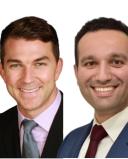Media
Social Media and the Rising Trend of Cosmetic Surgery
New research suggests there may be an association.
Posted September 17, 2019 Reviewed by Ekua Hagan
Social media provides users the opportunity to present the best versions of themselves to the public. Unfortunately, this has led many users to base their self-worth as contingent upon their appearance.
There are a variety of applications such as FaceTune and Photoshop that allow users to soften wrinkles or alter the size and shape of their facial features to enhance their appearance. More commonly used applications such as Snapchat and Instagram even have these filters built in, making digital appearance manipulation readily available to their users.
The popularity of social media and photo editing has had a significant impact on the field of cosmetic surgery. In 2017, for example, a survey of Facial Plastic surgeons found that 55 percent of surgeons reported seeing patients who requested to improve their appearance in selfies.
This trend has led to the creation of a new term called “Snapchat Dysmorphia,” which refers to the psychological phenomena of patients bringing filtered selfies to their surgeons to illustrate the desired surgical changes they want to achieve. Despite these observations, the role of social media use as a driver for cosmetic surgery is still not entirely clear.
A study published this year by Chen et al. was the first to look into this relationship. This was a survey study of 252 participants with the majority being Caucasian females around 25 years old who had not previously had any cosmetic surgeries.
They found that increased engagement in social media correlated with increased consideration for cosmetic surgery, and more so with the use of certain applications. Take Instagram or Snapchat for example. These platforms revolve around images and less so on the written text. The visual nature of such applications naturally leads users to focus on physical appearance.
The sociocultural theory suggests that people learn beauty standards within the social and cultural context. This ultimately may lead to people judging their own appearance based on the beauty standards defined by the society in which they live. Currently, the sociocultural standards in the United States and throughout much of the world are inarguably established online.
One of the most obvious dangers of having social media as the primary vehicle for establishing cultural standards is in the potential for the creation of unrealistic norms. This issue has previously been widely discussed as it pertains to the use of “airbrushing” and other techniques that have been used in the editing of marketing materials for many years. Many have expressed concern about the relationship between airbrushed magazine covers and the increased incidence of eating disorders, mostly in young women. With the advent of smartphone filters, the airbrush phenomenon has now spread to a much broader group.
It is human nature to engage in comparison. This is an evolutionary adaptation that has helped move human civilization forward over thousands of years by inducing conformity and community. But it may also come at a cost.
Studies have shown that comparing oneself to others that are believed to be superior often has negative impacts on self-esteem. This is called upward social comparison. Interestingly, On the other hand, downward social comparison can lead to an improvement in self-evaluation. And while there are some data to indicate that posting a digitally enhanced photograph may have an immediate positive effect on self-evaluation, research in this area suggests that in the long term, these posts likely have a negative effect on the self-esteem of the poster, perhaps because of the upward comparison the individual experiences between herself and her digitally altered image.
Overall, social media is a significant driver of cosmetic interventions. While we discuss above the complexities of this relationship, we also recognize the potential societal benefits of social media, specifically the dissemination of knowledge, potential for exchange of ideas, and community building.
These positive aspects of social media can be used to the advantage of both doctors and patients in the realm of cosmetic surgery. Patient-centric websites like RealSelf can serve as an excellent reference for patients desirous of information from medical professionals about treatments they are considering. Many physicians use social media applications or their own websites to publish educational materials regarding surgical indications, details, and recovery. The availability of this information online may ultimately lead to more alignment of patient and physician goals and expectations. As surgeons, we can attest that having a shared vision is the foundation of optimal cosmetic surgery results.


